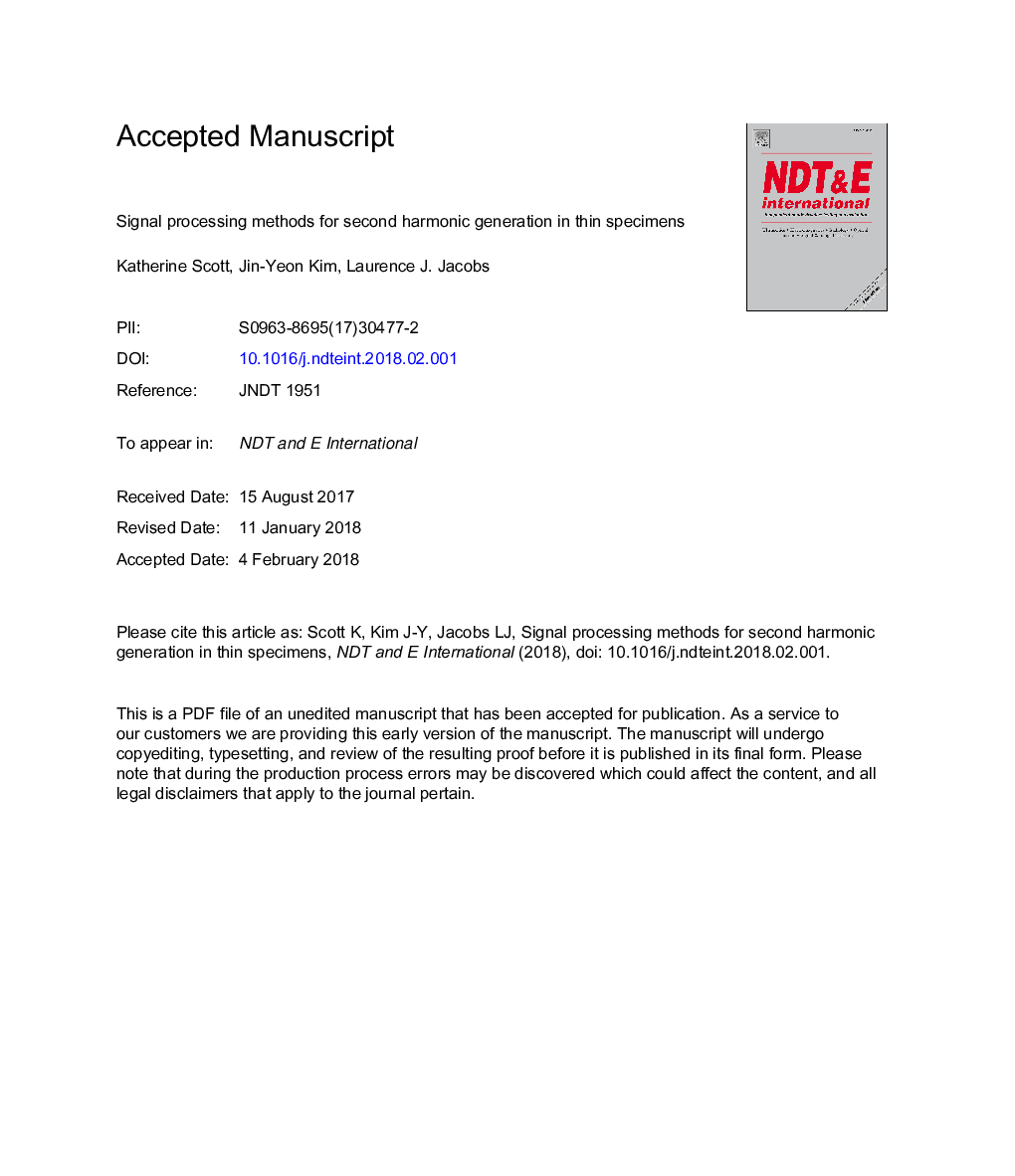| Article ID | Journal | Published Year | Pages | File Type |
|---|---|---|---|---|
| 6758276 | NDT & E International | 2018 | 26 Pages |
Abstract
This research explores five available signal processing methods: discrete Fourier transform (DFT); least squares method; original Prony method; least squares (LS) Prony method; and known poles (KP) Prony method, to accurately analyze the harmonic content of a tone-burst signal obtained from the second harmonic generation (SHG) measurement. Accurately obtaining the correct frequency content is especially important when the number of cycles is limited by the thickness or high attenuation of a specimen. Results from both numerically generated synthetic signals and experimental data from a specimen demonstrate that the least squares and KP Prony methods provide the most consistent and accurate results for tone-burst signals with low number of cycles. The conventional DFT provides accurate harmonic amplitudes only when the effective number of cycles (neff) is eight or higher. The least squares and KP Prony methods are then applied to a set of thin binary Fe-1.0% Cu alloy specimens where the changes in the nonlinearity parameter, β, as a function of heat treatment time is determined. The β parameters processed with these two methods produce trends that make better physical sense than processing with the original Prony method.
Related Topics
Physical Sciences and Engineering
Engineering
Civil and Structural Engineering
Authors
Katherine Scott, Jin-Yeon Kim, Laurence J. Jacobs,
